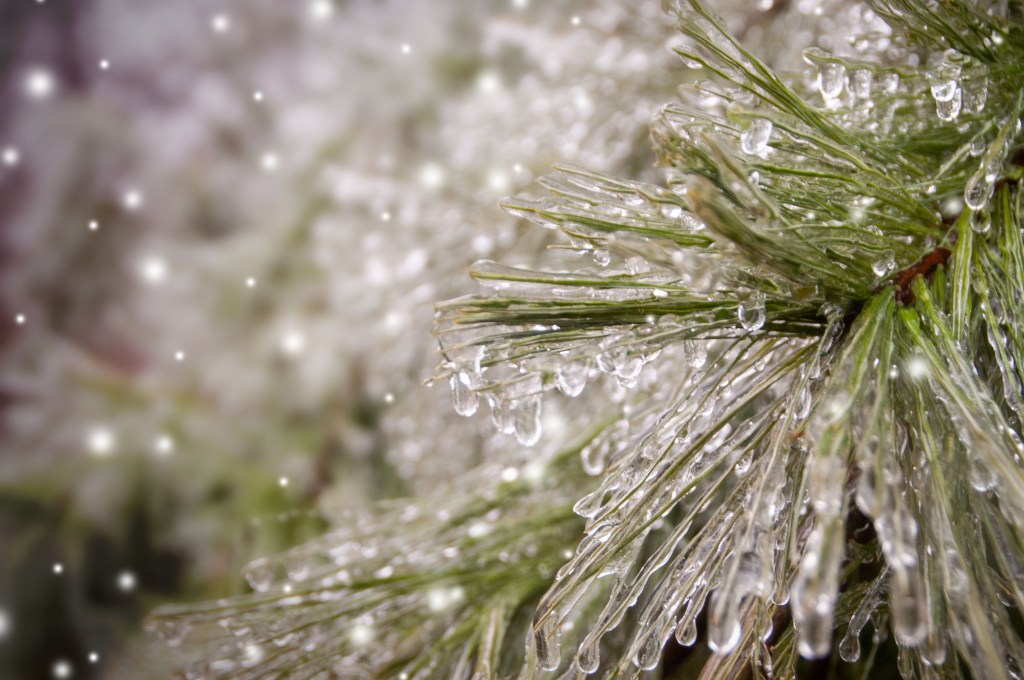
The Art of Ecology
Building visual connections between people and nature.
Evergreens in the Winter Landscape

As the vibrant fall foliage fades and the trees are left bare, a certain type of tree stands out amongst the gangly, naked maples and oaks – Evergreens! The greens and blues of their needles provide a welcome burst of color in a now grey and brown world.
Other than just providing a welcome splash of color in the landscape, Evergreens play a significant role in providing resources, such as food and shelter, to local wildlife species. From Flying Squirrels nesting the tops of the Eastern Red Cedar, to Cedar Waxwings relying on Juniper berries as food, to Grey Squirrels stripping the seeds out of pinecones – lots of animals need these trees to survive!
We often think of Conifers, or cone bearing trees, of being the only evergreens, however there are other plants that manage to keep their leaves year round (and…. did you know that Conifers don’t have to be evergreen? There are some deciduous ones as well!!!)! Are you looking to add some winter color to your landscape while also providing valuable habitat to birds, mammals, and other wildlife? Try adding:
- Winterberry Holly (Ilex verticillata)
- Rhododendrons & Azaleas (Rhododendron spp.)
- Mountain Laurels (Kalmia latifolia)
Having more evergreen shrubs in the landscape can provide wildlife with some vital habitat. Thickets that once were covered in leaves no longer have that protection and wildlife become more vulnerable without places to hide from predators.

Evergreens are not only great for wildlife, but they can also be a benefit to humans as well! Can you recall the wonderful aroma of cedar or fir? These scents come from oils and molecules in the evergreen tree. In those oils comes some great health benefits – like being packed with Vitamin C and Antioxidants, things that the body needs in order to boost the immune system. The oils of various conifers have also been known to relieve congested sinuses!

One great way to add more Evergreen to your diet is to drink a cup of warm evergreen tea! You can do this by choosing your favorite tasting conifer (pine with a smidge of honey is my personal favorite, although cedar, fir, and spruce are all edible) and chop the needles up. Chopping and damaging the needles allows the oils a way to escape into your water and be digested easier. Steep those greens in warm water. Keep in mind – boiling hot water can degrade the oils and break them down to a point where they are no longer as nutritious! They may still taste yummy, but if you’re going for the health benefits over taste, don’t boil the water, just make it warm enough to steep. When the needles sink to the bottom, they’re finished steeping and you can drink your cozy winter beverage.
Are you looking for some great winter Evergreen drink recipes? Head on over to my Trails-To-Tasting page for some boozy varieties (like Pine Needle Hot Toddies and Christmas Tree EggNog) that can be made without alcohol if you like! The 2020 winter season of this foraging series focuses on evergreens and plants that line the winter landscape while also providing some essential winter nutrients.
New to foraging and want to make sure that you do it properly, not just to identify edible plants for yourself, but in order to leave viable habitat for the wildlife you love? Click here for my Foraging Etiquette post.
Wish to bring some of the forest indoors? Check out my shop! It’s filled with nature’s goodness in photo and illustration form. A portion of all proceeds benefits plant conservation and habitat preservation efforts.

Supporting The Art of Ecology through the online shop or by becoming a Patron at any tier on Patreon can help keep educational content coming!

Thank you for sharing this interesting read on evergreens. I appreciate the efforts you have put into the work. Keep sharing more.
Thank you for those kind words! I’m glad you enjoyed it.